Finding vehicle details
The vehicle details inspection sheet (F3529) is used for all vehicles including trailers, caravans, mobile machinery and mobile homes.
Insert a dash ("-") when you don't need to complete a section of this sheet. For example, an engine number or seating capacity doesn't apply when inspecting a trailer.
Find out more about how to complete these sections of the vehicle details inspection sheet (F3529):
- Operator details
- Vehicle details
- Vehicle identification number (VIN)
- Chassis number
- TMR-issued identifiers
- Identifying a TMR-issued LVV
- Compliance type
- Missing compliance plates
- Locating compliance/identification and VIN plates
- Personal import plates and Registered automotive workshop scheme (RAWS) plates
- Register of approved vehicles (RAV)
- Imported vehicles
- TMR inspection locations
- Engine number (if applicable)
- Make
- Model
- Body shape
- Series
- Badge
- Cylinders
- Fuel type
- Seating capacity
- Odometer reading
- Vehicle mass details (heavy vehicle)
- Vehicle mass details (light vehicle)
- Vehicle has left or right-hand drive
- Vehicle colour
- Modification details
- Heavy vehicle modification codes
- If a speed limiter is fitted (heavy vehicles)
- Declaration
Operator details
Vehicle operator's name and address (individual or company name).
Vehicle details
These details must be taken from the vehicle itself. If the previous plate number is known, this should be provided.
Vehicle identification number (VIN)
- Consists of 17 characters in an alpha-numeric combination (excluding alpha I, O and Q)
- Identifies the frame of vehicles manufactured after 1 January 1989
- Is part of the international system designed to reduce theft
- Aims to provide each vehicle with a unique identifier

Caption—Example of a VIN
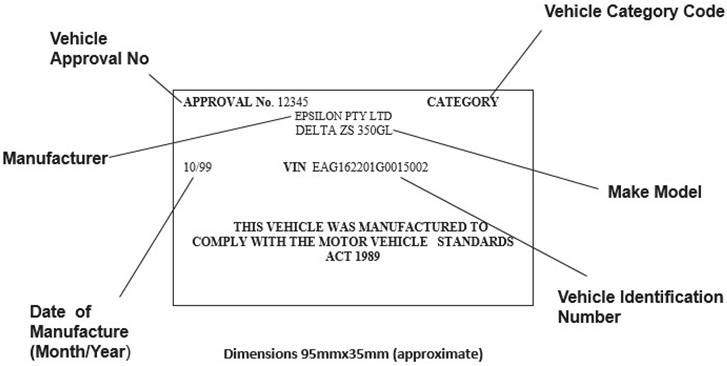
Caption—Example of a compliance plate showing the VIN
Chassis number
- Consists of any combination of alpha-numeric characters
- Variable in length
- Generally stamped in a straight line of similar size
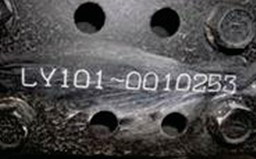
Caption—Example of a chassis number
All vehicles must have an individual VIN or chassis number clearly stamped, embossed or permanently marked on a substantial part of its frame or chassis. Refer to schedule Part 5, Section 48 in Transport Operations (Road Use Management—Vehicle Standards and Safety) Regulation 2021.
Australian Design Rule 61 requires the VIN or chassis number to be recorded on the vehicle's identification plate and elsewhere on the vehicle.
When performing pre-registration inspections, ensure the identifier stamped into the vehicle/trailer and on the identification plate are identical and have not been altered.
It was identified that many trailer manufacturers were not aware of the requirement to stamp a VIN into the frame of a trailer in addition to fixing a plate on trailers with an aggregate trailer mass (ATM) of 4.5t or less. Manufacturers were required to implement this change from 1 September 2010.
TMR-issued identifiers
For Low Volume VIN (LVV) trailers, Transport and Main Roads (TMR) will issue a trailer LVV to the:
- manufacturer
or - registered operator if the identifiers are missing.
Trailers issued with a LVV must present to TMR for an identity check. The purpose of this inspection is to confirm the identifier is:
- attached to the correct trailer
- stamped on the trailer
- recorded on the identification plate.
This identity check is only required for the first time the trailer is registered with the identifier.
HVRAS accredited persons may still inspect LVV trailers and complete the relevant inspection sheet. For trailers that require a TMR identity check, the HVRAS accredited person must inform customers before beginning the inspection that they will still need to present the vehicle for an identity check by a TMR officer and that the HVRAS inspection could be completed without charge by the TMR officer.
If you locate the original identifiers during your inspection, the customer must be referred to one of our transport and motoring service centres.
Not all of our transport and motoring service centres conduct trailer inspections. Please check the services provided by each centre to confirm if they can inspect trailers.
Identifying a TMR-issued LVV
Example VIN: 6T9T22ABN10AAB001
This example is a TMR-issued LVV because:
- it starts with "6T9T"
- the identifiers in positions 12 to 14 are "AAB".
If the VIN starts with 6T9T but does not have AAB, it has been issued by a different state/territory or to a customer that has their own World Manufacturer Indicator (WMI). In this case, it is not required to be presented to TMR for an identity check for its first registration in Australia.
If the trailer has been issued with a TMR-issued LVV and has been previously registered with the LVV in Australia (including Queensland), it is not required to be presented to TMR for an identity check.
A customer registering for the first time in Australia, a trailer with a TMR-issued LVV can still obtain a HVRAS inspection sheet (if the trailer is >0.75ATM) or complete a self-assessment (if ATM <750kg). TMR will still need to conduct an identity check and will rely on the HVRAS self-assessment to compare with what is stamped on the trailer and the trailer plate.
| VIN segment | Description |
|---|---|
| 69T | Australian World Manufacturer Indicator (WMI) |
| T20 | Vehicle descriptor—code for type of vehicle |
| ADA | TMR issuing office |
| 1 | Production indicator |
| 0 | Year VIN was issued |
| AAB | TMR WMI extension |
| 001 | Sequential number |
Compliance type
Compliance/identification plates are fitted under the Australian Design Rules to ensure vehicles meet structural and safety standards for road use in Australia.
A compliance/identification plate:
- must be attached to a motor vehicle built between 1 January 1972 to 31 August 1989 (compliance plate)
- must be attached to a motor vehicle built after 31 August 1989 (identification plate)
- may be constructed of metal or can be an adhesive label
- must be attached to trailers as outlined in the table below.
| Trailer type | GTM/ATM | Date manufactured from |
|---|---|---|
| Semi/low loader | >20t and ≤60t | 1 July 1984 |
| Dog/pig | >20t and ≤60t | 1 July 1985 |
| Light | ≤4.5t | 1 July 1988 |
| Heavy | ≥4.5t and <60t | 1 July 1986 |
The vehicle details inspection sheet (F3529) lists only 3 types of compliance/identification plates (full compliance plates, low volume compliance plates and import plates). However, there are 5 different categories as listed in the table below.
| Category | Type | Colour |
|---|---|---|
| Category A (metal plate or adhesive label) | Standard full volume vehicles other than 2-wheeled or 3-wheeled vehicles | Colour other than red, green, blue or yellow |
| Category B (metal plate or adhesive label) | Standard full volume 2-wheeled and 3-wheeled vehicles | Colour other than red, green, blue or yellow |
| Category C (metal plate) | Low volume vehicles other than 2-wheeled and 3-wheeled vehicles | Green |
| Category D (metal plate) | Low volume 2-wheeled and 3-wheeled vehicles | Green |
| Category E (metal plate) | Standard full volume trailers with ATM >4.5t | Colour other than red |
Read more about identification plates in Administrator's Circular 0-3-2 published by the Australian Government.
Missing compliance plates
If a compliance plate is missing, record the identifier stamped on the vehicle in the vehicle details inspection sheet (F3529) and include "compliance plate missing". Once this is done, continue with the measure up and inspection.
Some information (such as GVM and seating capacity) will be difficult to record. The adult seating capacity can be viewed in the vehicle.
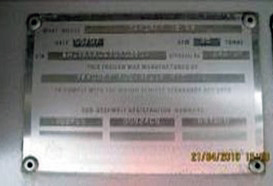
Caption—Examples of different compliance plates
Locating compliance/identification and VIN plates
The compliance/identification plate or label must be affixed to the body of the vehicle in a position where it may be readily examined.
Commonly used locations include:
- passenger cars and bonneted trucks—generally positioned on the panel separating the front compartment from the passenger compartment, on a front suspension tower or on an engine compartment side deck
- cab over engine trucks—generally located in the passenger compartment on the inner panel rearward of the driver or passenger door
- forward control passenger vehicles and vans—generally positioned within the passenger compartment in the front passenger's foot well area
- trailers—generally positioned on the front vertical face of the trailer, adjacent to the trailer brake line couplings or on an inward-facing vertical face of an A-frame draw bar where fitted.
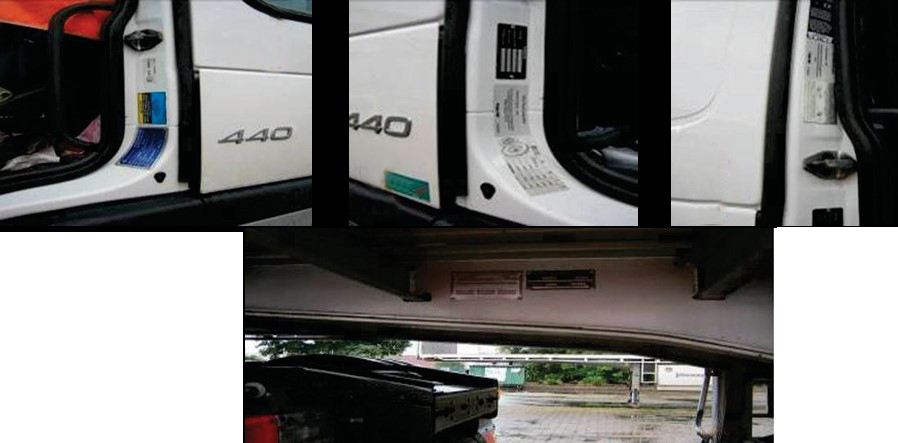
Caption—commonly used locations for compliance/identification and VIN plates
Personal import plates and Registered Automotive Workshop Scheme (RAWS) plates
The vehicle importer is legally required to attach a personal import or RAWs plate signifying that the imported vehicle complies with Australian Standards. This applies to light vehicles only.
Register of Approved Vehicles (RAV)
From 1 July 2021, the Australian Government is introducing a Register of Approved Vehicles (RAV). The RAV is an online searchable public database of vehicles that have met the requirements of the Road Vehicle Standards Act 2018 (RVS legislation) and been approved for provision to the Australian market. The details of each vehicle approved for road use will be entered on the RAV instead of the vehicle being fitted with a compliance plate.
Physical markings on vehicles will still be required by the RVS legislation. There will be a secure vehicle identifier (SVI) in the form of a durable self-adhesive label or a durable metal plate placed on the body part of the vehicle in a position where it is not exposed to accident damage or disfigurement and can be readily examined. The SVI plate or adhesive label will contain the VIN in readable text.
Find out more about the Register of Approved Vehicles.
Imported vehicles
HVRAS accredited persons are not permitted to inspect and measure imported vehicles unless the vehicle has been previously registered in Australia. Imported vehicles that are obtaining registration for the first time in Australia must be inspected at a transport and motoring service centre.
Identification of legitimate compliance plates is crucial as the compliance plate may be an indicator of an attempt to fraudulently register a vehicle that doesn't comply with Australian Standards. Compliance plates are located in various places.
TMR inspection locations
Not all of our transport and motoring service centres conduct identity checks. Please check the services provided by each centre to confirm if they can inspect the vehicle or trailer.
Engine number (if applicable)
An engine number identifies the motor of the vehicle. All vehicles manufactured after 1930 are required to have an engine number. Engine numbers are generally:
- issued in any combination of letters and numbers
- variable in length
- stamped in a straight line of similar size on the engine block or main component.
Engine numbers must be clearly stamped, embossed or permanently marked on the engine block or main component. Refer to part 5 Vehicle Marking, Section 48 in Transport Operations (Road Use Management—Vehicle Standards and Safety) Regulation 2021.
There are some exceptions. Certain vehicles manufactured before 1960 do not have the engine number stamped on the engine, they may have an engine number plate affixed to the vehicle or displayed on the manufacture's plate.
Vehicles (other than those mentioned above) may have engine number plates affixed to the firewall. Sighting the engine number by these plates is unacceptable. The engine number must be sighted only from the markings on the engine. New vehicles may have a stick-on tag with the engine number—these tags are acceptable.
Make
The make of a motor vehicle is the marque or name of the manufacturer by which that range of motor vehicles is popularly known (for example, Kenworth and Mack are marques of their maker).
Model
The model designation of a motor vehicle is the name given to a class or family of motor vehicles that is of the same:
- make
- general type or appearance.
Body shape
When inspecting a vehicle, ensure that the body shape is reflected on the compliance plate.
Series
Vehicle series is a delegated listing that relates to a particular model as defined by the manufacturer. A series commonly runs for a period of time and is then superseded by the next series. The series is to be recorded on the vehicle details inspection sheet (F3529) when possible.
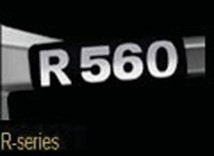
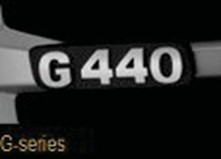
Caption—Examples of a vehicle series
Badge
Vehicle badges are not applicable to all vehicles. An example of a badge is Canter or Titan.
Cylinders
Record the number of cylinders for a vehicle—rotary engines are recorded as 2R or 3R, whichever is applicable.
Fuel type
The fuel type is how the engine is powered (when applicable) and can be:
- petrol
- diesel
- gas
- electric
- petrol and gas
- diesel and gas
- petrol and electric
- diesel and electric.
Seating capacity
If applicable, record the number of adult fixed seats (including the driver) as recorded on the compliance or modification plate. Add this information to the seating capacity section on the vehicle details inspection sheet (F3529). If the physical number of seats do not match, advise the customer that they will need a modification plate.
Odometer reading
This reading is the total kilometres or miles travelled by the vehicle. It is displayed on the speedometer on the vehicle's dash or instrument panel.
Vehicle mass details—heavy vehicle
These definitions are taken from the Heavy Vehicle National Law Act 2012 (Queensland). Complete this information on the vehicle details inspection sheet (F3529) if relevant to the vehicle being inspected.
Tare mass of a heavy vehicle is the mass of the vehicle that:
- is ready for service
- is fitted with all standard equipment, together with any options that are fitted
- is unoccupied and unladed
- has all fluid reservoirs (other than for fuel) filled to nominal capacity
- has 10L of fuel in the fuel reservoir or reservoirs (but excludes any loaded fuel over 10L).
Gross vehicle mass (GVM) of a heavy vehicle is the maximum loaded mass of the vehicle:
- if the registration authority has specified the vehicle's maximum loaded mass
or - otherwise stated by the vehicle's manufacturer.
Aggregate trailer mass (ATM) of a heavy trailer is the total maximum mass of the trailer, as stated by the manufacturer, together with its load and the mass imposed on the towing vehicle by the trailer when the towing vehicle and trailer are on a horizontal surface.
Gross combination mass (GCM) of a motor vehicle is the total maximum loaded mass of the motor vehicle and any vehicles it may lawfully tow at any given time:
- if the registration authority has specified the total maximum loaded mass of the motor vehicle and any vehicles it may lawfully tow at any given time
or - otherwise stated by the motor vehicle's manufacturer.
Gross trailer mass (GTM) of a vehicle is the mass transmitted to the ground by the axle or axles of the trailer when coupled to a drawing vehicle and carrying its maximum load approximately uniformly distributed over the load bearing area, and at which compliance with the appropriate Australian Design Rule has been or can be established.
Vehicle mass details—light vehicle
These definitions are taken from the Transport Operations (Road Use Management—Vehicle Standards and Safety) Regulation 2021. Complete this information on the vehicle details inspection sheet (F3529) if relevant to the vehicle being inspected.
Gross combination mass (GCM) of a motor vehicle is the maximum loaded mass of the motor vehicle and any vehicles it may lawfully tow:
- stated by the motor vehicle's manufacturer:
- on the motor vehicle's compliance plate
or - if there is no compliance plate, in another place
or - on the motor vehicle's compliance plate
- stated by the registration authority for the motor vehicle if:
- the manufacturer has not stated the maximum loaded mass of the motor vehicle and any vehicles it may lawfully tow
or - the manufacturer cannot be identified
or - the motor vehicle has been modified and the maximum loaded mass of the motor vehicle and any vehicles it may lawfully tow, as stated by the manufacturer, is no longer appropriate.
- the manufacturer has not stated the maximum loaded mass of the motor vehicle and any vehicles it may lawfully tow
Gross mass
Vehicle not included in a combination—the gross mass is the total of:
- unladen mass of the vehicle
- mass of the load, if any, in the vehicle.
Vehicle included in a combination—the gross mass is the total of:
- unladen mass of all the vehicles in the combination
- total mass of the load, if any, in the vehicles.
Gross trailer mass is the mass transmitted to the ground by the axles of a trailer when the trailer is loaded to its GVM and connected to a towing vehicle.
Vehicle has left or right-hand drive
A vehicle such as a rubbish truck or street sweeper can have different types of steering mechanisms (for example, right-hand drive, left-hand drive, central or dual control).
Left-hand drive vehicles that have a GVM ≤4.5t and are over 30 years old can have standard registration.
Left-hand drive vehicles that are <30 years old and cannot be issued a permit for registration purposes must be converted to right-hand drive.
Vehicle colour
If the vehicle is a single colour this is recorded as the primary colour.
If the vehicle has more than 1 colour, record the main colour as the primary colour and the lesser colour as the secondary colour on the vehicle details inspection sheet (F3529).
Modification details
Modifications are changes to a vehicle that require certification by an approved person authorised by the National Heavy Vehicle Regulator (NHVR) or TMR before the vehicle records can be updated.
If the vehicle has been modified, it is important that you sight the modification plate attached to the vehicle and record the required details from the plate on the vehicle details inspection sheet (F3529).
Heavy vehicle modification codes
Find out more about heavy vehicle modification codes. Queries regarding heavy vehicle modifications should be directed to the National Heavy Vehicle Regulator.
Multiple modification plates may be attached to a vehicle and include the same modification codes. You must take the information from the most recent modification plate.
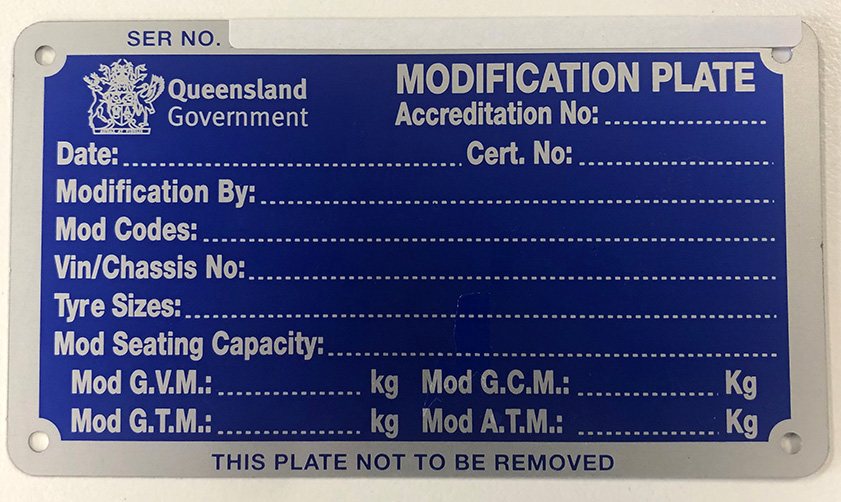
Caption—Example of a modification plate
Speed limiter fitted—heavy vehicles
The Heavy Vehicle (Vehicle Standards) National Regulation (HV(VS)NR) requires vehicles to comply with the Australian Design Rule (ADR) 65—Maximum Road Speed Limiting for Heavy Goods Vehicles and Heavy Omnibuses before a vehicle can be registered.
ADR 65/00 requires the following vehicles be fitted with a speed limiting device:
- heavy omnibus over 5t up to 14.5t GVM and built on or after 1 July 1991
- heavy omnibus over 14.5t GVM and built on or after 1 January 1991
- heavy goods vehicle over 12t GVM, up to 300HP and built on or after 1 July 1991
- heavy goods vehicle over 12t GVM, over 300HP and built on or after 1 January 1991.
Section 109 of the HV(VS)NR requires the following vehicles to comply with ADR 65/00 (with some exceptions):
- buses with a GVM over 14.5t built after 1987
- prime movers with a GVM over 15t built after 1987.
Do not complete this section if you are unsure if a speed limiter is fitted.
Declaration
The declaration is to be completed, signed and dated by the HVRAS accredited person, declaring they have inspected the vehicle indicated on the vehicle details inspection sheet (F3529) and certifying that the information provided has been taken directly from the vehicle. Under no circumstances should you pre-sign a vehicle details form or an inspection sheet.
It is an offence to give false or misleading information under the Transport Operations (Road Use Management) Act 1995 and doing so may incur a penalty.
More information
- Last updated 12 July 2022

